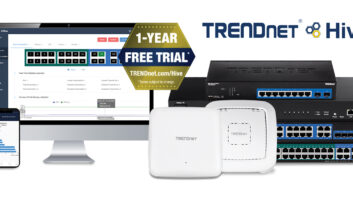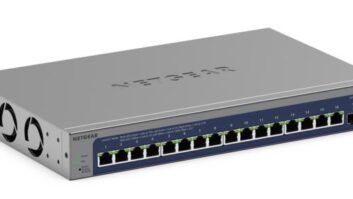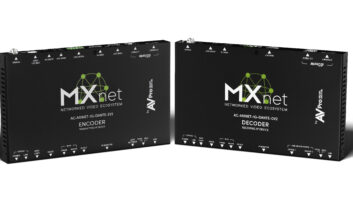When they first arrived in the custom integration channel, media servers packed the quintessential “wow factor.” With their ability to store a large collection of movies and music and distribute them throughout the home– often with breathtaking user interfaces that employed the best of our visual technology–they were the must-have component of a completely integrated home entertainment system. In a sense, they anticipated consumer hunger for a well-organized media library without the out-of-fashion aesthetics of actual media-clogged shelves.

Much has changed over the past two years, however, which is not to say media servers have become irrelevant. In fact, the forward-thinking functionality that they provided just a few years ago has erupted into a fullblown evolution in how people access their media collections. This is thanks in large part to the wide acceptance of cloud-based and streaming technologies that promise to not only drive DVDs and CDs into extinction, but also to open a heaven-sized door to more media content than most people know what to do with. The appeal for most consumers, judging by the extraordinary success of companies like the movie-streaming service Netflix and the subscription-based music site Spotify, is the low-cost entry fee for access to these vast stores of media that often come with an array of cross-platform integration to make their attractiveness almost blinding.
The challenge for hardware-based media servers, especially within the custom integration channel where the client is often sophisticated enough to be aware of these cloud-based and streaming services, becomes a duel play of distinction and compatibility; it’s a bridging of their unique physical functionality with the allure of today’s empyreal streaming technology.
Media Servers Go Streaming

The result of Autonomic’s evaluation of the media server landscape a few years ago was the Mirage Media Server, which it now touts as the world’s first cloudbased media server. Android and iPhone applications now make it mobile.
The one thing media servers do really well is offer a single-hub and distribution center for end-user-owned photos, music, videos, and movies that clients already have and cherish. With the advent of streaming services, media server manufacturers didn’t hesitate; they quickly partnered with the likes of Netflix, Rhapsody, Last.fm, Pandora, SiriusXM, and a host of other digital streaming services to broaden client-owned media libraries, while maintaining the centralized architecture that clearly distinguishes them from the less glamorous mouse-clicking affair of computer streaming.
“In 2009, we had a discussion about the benefits of cloud computing, and we immediately understood that it could completely change the landscape of what we were doing,” said Michael de Nigris, co-founder and CEO of digital media management manufacturer, Autonomic. “At that time, we were focused on problems like maximizing the quality of digital audio content, delivering multiple streams of local music, and tackling complex DRM issues. These are things we still do great, but we clearly saw that enjoying content that is stored and delivered from the cloud could offer an entirely new level of convenience, discovery, and spontaneity.”
The result of Autonomic’s evaluation of the landscape was the Mirage Media Server, touted as the world’s first cloud-based media server. A hit with Autonomic’s dealer base, the Mirage range of servers delivers automatic, bidirectional synchronization of local and streaming content as well as cloudbased back-up of all content, allowing for remote access to a consumer’s entire media library from anywhere in the world. Android and iPhone applications make it mobile.

With servers often catering to a luxury client base by offering HD-quality video and audio playback, Mozaex, has made sure to cover all of the major digital evolutions of the server functionality with its 4Play media server.
“It’s really a liberating feeling to spontaneously purchase a great new track from iTunes or Amazon on any device you happen to be carrying,” de Nigris said, “and know that without lifting a finger or even thinking about it, it’s somehow going to make its way to all of your whole-home audio systems.”
NuVo Technologies, which manufactures whole-home audio distribution products, also made similar media-liberating changes to its cache. Its current star, the Music Port series, allows for stored content like NuVo’s past generations of servers, but also now offers a host of streaming content thanks to partnerships with providers like Pandora and TuneIn.
“Streaming internet radio, and the addition of network storage to increase the variety and volume of content, have become key features in appealing to the present-day consumer,” noted David Rodarte, president and CEO of NuVo. “These days there are seemingly limitless avenues to finding and keeping great music, and a modern server needs to keep up.”
Mozaex, whose servers often cater to a luxury client base by offering HD-quality video and audio playback, has made sure to cover all of the major digital evolutions of the server functionality with its 4Play media server. According to Douglas Kihm, Mozaex’s CEO, 4Play covers the management of physical discs, downloaded media, streaming media, and playback media on smart phones, tablets, and laptops.
“Mozaex uniquely supports all of these forms of entertainment media all within one simple-to-use user interface, which dramatically simplifies and enhances the user experience since they do not need to switch between different devices and user interfaces,” Kihm said of 4Play. “We support virtually every form of media, including Bluray 3D, NetFlix/VUDU/Pandora streaming plus 200 other online channels, downloaded iTunes movies and music, plus soon, mobile device playback of movies, music, photos and other personal media on iPhones and Androids.”
CasaTunes, which originally started out with the mission of giving customers complete control over their whole-home music system with the use of a simple remote control device, has branched out those capabilities with external streaming services as well. It has achieved this by embracing services like Spotify as if it were another stream on its platform, which includes mobile phone apps and computer-based controls.
“CasaTunes considers its advanced multi-streaming capabilities, including simultaneous streams of Windows, iTunes (in the Cloud), streaming multiple iPod devices, smartphones, tablets, AirPlay support, and support for various internet music and radio service, to be an essential feature,” said Wade Riewerts, the company’s operations manager. “CasaTunes can instantly and, in perfect sync, switch any of the available streams to any combination of rooms.”

Niles Audio has integrated its proprietary IM-NET network integration module into its GXR2 modular multizone receiver to give streaming digital content a place in its offerings.
Discontinuing its standalone server to focus on improving the serverlike capabilities of its GXR2 modular multi-zone receiver, Niles Audio has integrated its proprietary IM-NET network integration module to give streaming digital content a place in its offerings.
“The Niles GXR2 modular multi-zone receiver can be equipped with up to six IM-NET network integration modules to provide up to six simultaneous music streams from network-connected hard drives and premium music services, such as Pandora, Rhapsody, and SiriusXM,” explained Mike Detmer, Niles Audio’s president. “Each card can access all of the sources and can be programmed in the user interface to appeal to each individual user. For instance, clients can have individual IM-NET cards labeled ‘Mom,’ ‘Dad,’ and ‘kids’ that can each access different streaming sources or separate subscription accounts.”
On the video server side, Fusion Research–manufacturer of the Studio Movie, Encore, and Genesis series of media servers–has added Blu-ray support, larger server capacity, and streaming media support as well as HD audio and 3D playback to its range.
“A video server will always be for those people who enjoy and collect movies. With the ability to catalog their entire collection, servers that store physical media still provide a much higher quality video and audio experience for those wishing to watch movies on a great home theater system,” said Ingo Schmoldt, vice president of sales for Fusion Research. “The fact that we combine physical media storage and the convenience of the major streaming applications make it a great choice to be the hub of a connoisseur’s entertainment experience.”
Distinction Outside of the Cloud
There are media server manufacturers in the custom integration industry who have created unique profiles outside the demands of cloudbased and streaming services. Focusing on the experience of having a media server in and of itself, companies like Kaleidescape are reconfiguring how end-users interact with content servers, treating the component less like a conduit and more like a unique tool to enhance interaction with the content.
Kaleidescape’s recently unveiled scenes feature, speaks to this out-of-the-box thinking when it comes to digital content management. Enlisting the help of its movie experts, the company has handpicked more than 4,000 scenes from more than 700 popular movies to offer its end-users a unique use for their unit: scene surfing.
“In the past, watching a movie was a twohour commitment I could rarely make,” said Kaleidescape’s founder, chairman, and CEO, Michael Malcolm said at the time of the announcement last August. “Now it’s possible to spend as little as a few minutes exploring my collection, and it can be a social experience I share with family and friends.”
Kaleidescape also gives mobile devices a nod with its iPad app, adding a new level of control for its unit owners. Convenient for browsing a Kaleidescape library while a movie is playing, the app offers several ways to search for movie scenes, including by genre, director, and actor.
Ease of use and reliability have been at the forefront of VidaBox’s media server product line development, an approach that stems from the company’s view that “streaming currently lacks the breadth of selection and playback quality that disc-based titles offer,” as the company president, Steven W. Cheung stated. “The high fidelity from lossless music or 1080p video with 7.1 surround sound simply isn’t available from any major streaming service.”
Though VidaBox’s media servers do combine server content with online sources through its onscreen interface, Cheung also takes pride in his company’s hardware functionality, including its one-step “drop-n-rip” technology and built-in RAID protection that makes media archiving safe, secure, and easy.
“Our ‘DualRip’ feature then allows music CDs and DVD movies to be archived into multiple, different formats for universal playback compatibility, so users can easily enjoy their media regardless of which playback device is being used,” Cheung said.
Boulders in the Stream
It is unanimous across the media server channel that the shift from in-home media storage to cloud-based and streaming will eventually dominate the landscape. Autonomic’s de Nigris was the first to raise the specter of the music industry’s poor transition to digital media and expressed positive predictions that things will go a lot better for media server manufacturers looking to deliver on the new technology without breaking any laws.
“We see the industry looking at some interesting approaches to the copyright and licensing complexities, and we’re working with some groups who we think will become key players,” de Nigris said. “We’ve succeeded in delivering the best cloud-based music solutions to the custom installation industry, and we’re not going to settle for anything less when we release our video products.”
There is also the belief, held most strongly by Kihm of Mozaex, that physical media like compact discs and DVDs aren’t going anywhere. Citing the large storage capacities and subsequent transmission bandwidths required to stream or download 50GB Blu-ray discs, he is emphatic that online media will never replace physical media.
“People will always want to own a personal tangible collection of their favorite movies, home videos, music, and photos that they privately and safely want to archive for future access,” Kihm said. “[They] will never fully depend on an online service to guarantee that their personally owned collection of media will always be safe and available, especially their personal family-made collection of home videos and photos.”
Fusion Research’s Schmoldt supported Kihm’s perspective when he said that a recent study reported a 35-percent increase in Blu-ray sales for 2011 in spite of a sluggish economy.
“Streaming and cloud-based technologies are very popular, but are all about convenience and access, not quality of video,” Schmoldt said. “It will be years before streaming video will match the quality of DVDs, not to mention Bluray’s superior playback experience. By that time, even higher definition displays and sources will no doubt push a new physical media product.”
Kihm and Schmoldt may be right on some level, but the available evidence shows that people might be more comfortable with the cloud and stream than they are giving them credit for. With every media server company out there (including Mozaex and Fusion Research) giving legions of online media content services real estate on their components, it seems that the twain have met and, as we are already seeing, have wedded. They might just live happily ever after.
How are you pitching media servers to your clients?
“We start by telling them that an easy solution would be to have everything in one location, being able to access it from any location and best of all, they won’t open a DVD cover to find no DVD in it!”
–David Chan, President, Advanced Home Automation, Manalapan, NJ
“One of the most valuable features of a media server that we pitch is that it makes your digital content instantly available, and you can keep the original DVDs safely stored. The more disks a customer has the more difficult it becomes to deal with them…People purchase a disk that they already have because they can’t remember a 600 DVD inventory.”
–Bob Westlake, President, Custom Design & Installation, Chesterfield, MO
“We are finding that families want to be able to play their own music libraries in various rooms of the house and not necessarily share those libraries as each family member has their own unique music preference and device where the library resides. This is especially important for homes with teenagers.”
–Russ Michaels, Owner, Audio Video Inc., Bellevue, WA
Llanor Alleyne is a contributing editor to Residential Systems in Brooklyn, NY.






